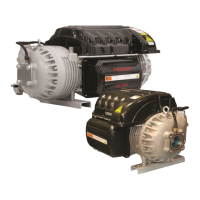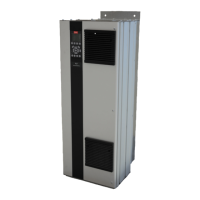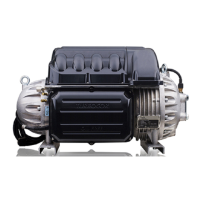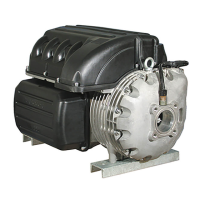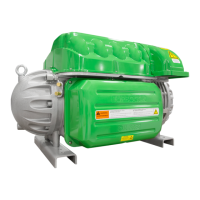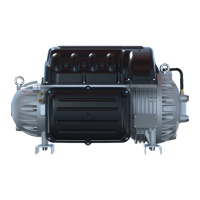Page 26 of 108
M-AP-001-EN Rev. N
M-AP-001-EN Rev. N
Functional Description
Figure 3-6 - Magnetic
Bearing Conguration
A rotating shaft, under changing load conditions, will experience forces in both radial and
axial directions. In order to compensate for these forces, a ve-axis bearing system is used,
incorporating two radial bearings of two axes each, and one thrust (axial) bearing (see
Figure 3-6).
The Bearing Control System uses rotor position feedback to close the loop and maintain the
rotor in the correct running position (see Figure 3-7). The Bearing Controller issues position
commands to the Bearing PWM Amplier. The position commands consist of ve channels
with each channel allocated to one of the ve bearing actuator coils (one coil for each axis).
The amplier uses IGBT technology to convert the low-voltage position commands to the
250VDC PWM signals that are applied to each bearing actuator coil.
Rotor position sensors are located on rings attached to the front and rear radial bearing
assemblies. The front sensor ring contains sensors that read the rotor position along the X,
Y, and Z axes. The rotor position along the Z (or axial) axis is read by measuring the distance
between the sensor and a target sleeve mounted on the rotor. The rear sensor ring contains
sensors that read the position along the X and Y axes. Information from the position sensors
is continuously fed back to the bearing controller.
DC-DC converters supply and electrically isolate the high and low DC voltages that are
required by the control circuits. The HV DC-DC Converter delivers 24VDC and 250VDC from
an input of 460-900VDC. The 24VDC and 250VDC are used to power the Backplane and
magnetic bearing PWM Amplier, respectively.
3.5 Magnetic Bearing
System
3.5.1 Overview
3.5.2 Bearing Control
System
3.4.13 High-Voltage DC-
DC Converter

